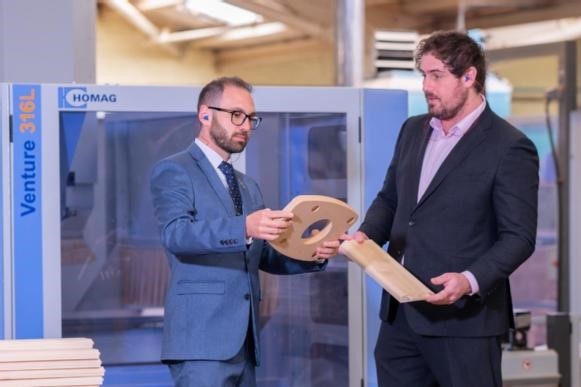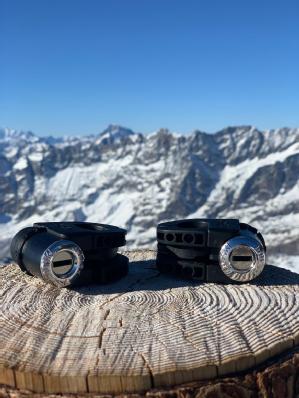Success Story Assetbank
Expressing steely determination to innovate
Working with partners in the steel industry, WMG has been accelerating the development and optimisation process for steel products.
Digital solutions leave seat manufacturer sitting pretty
Car manufacturing in the UK is changing radically, as the electrification is forcing innovation and design change of almost all parts of cars. Industry leaders are challenged to change design radically, launch new products more quickly, while maintaining quality levels and costs. To keep up with this, many manufacturers in the supply chain are already embracing digital technologies to connect their factories, improve processes and reduce costs. By embracing digitalisation, the electrification of the automotive sector could unlock growth of up to £75bn by 2035, benefitting the entire supply chain.
Using digital to develop manufacturing
Lear Corporation are a leading supplier of automotive seats and electrical systems, and their customers include major OEMs such as Jaguar Land Rover. With a long history in luxury and performance seating, they are one of the world’s largest providers of premium automotive leather seats, operating over 250 facilities across 38 countries, including 3 Just in Time final assembly plants here in the UK.
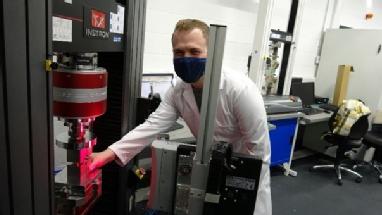
With safety and performance paramount, Lear must ensure that every seat is of the highest quality but working with comfort materials, such as foam, and natural materials, such as leather, brings with it a number of challenges. Not least, the natural defects that occur in these materials, such as wrinkles and discolouration, which must be rectified before products are ready for the customer.
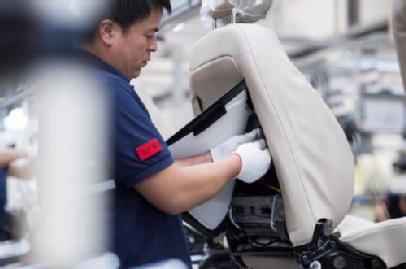
Back in 2017, Andrew Williams, Director, Process Innovation at Lear Corporation was looking for ways to deploy digital technology to improve their seat inspection process, reducing waste and rework. “Seat inspection takes place at the end of the production line, and it’s a manual process which relies on the judgement of experienced operatives,” Andrew said. “But ultimately, it is subjective, we set our standards very high to protect our customer but human judgement will always have an element of variation.”
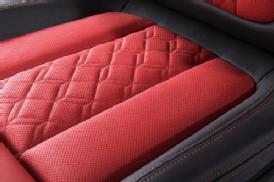
Lear wanted to innovate and deploy smart manufacturing solutions that would automate the inspection process, providing increased consistency and generating quantitative product data to the engineers in our relentless pursuit of perfect quality. Lear approached WMG as a market study showed a lack of readily available commercial and deployable solution that suited Lear’s needs at that time.
“We already had a relationship with WMG with apprentice, undergraduate and post graduate training programs. Lear’s philosophy is to constantly look for ways to use new technology to improve manufacturing processes and knowing WMG were all about industry-focused research, we knew they would be a good fit for this challenge.”
Andrew teamed up with our Automation Systems Group on the Lear Seat Manufacturing (LSM) project, supported by funding from WMG Centre HVM Catapult.
Exploring the possibilities
After scoping the project carefully, WMG set about building and testing machine learning-based object detection systems as an inspection tool; Using image capture systems mounted on a seat inspection station, the solution would be capable of detecting and classifying defects, and of assessing whether the seat would be acceptable against the customer standards, or whether additional rework is needed.
Developing the solution and training the AI, involved manually labelling a large data set. To facilitate this process, the team developed a “digital marker” that allows an in-line, in-process labelling workflow.
Dr Dan Vera, Associate Professor at WMG, said: “To train the AI inspection system, you need to tell it what defects are and what they look like. You have to label defects so it learns. Typically, labelling is done offline, after images are captured. With the labelling system developed at WMG, operators can digitally label defects on the real seat, and directly on the production line – we call it the magic wand!”
In order to test how the different elements would work together in a real manufacturing environment, we installed a prototype inspection station in the National Automotive Innovation Centre (NAIC) at WMG before taking the station into Lear’s plants for evaluation in production.
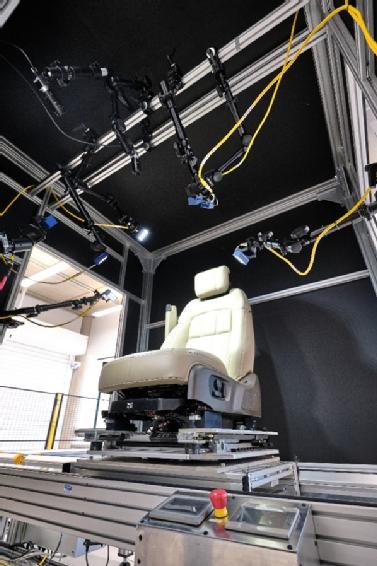
Looking to the future
The machine-learning seat inspection software was trialled at two of their factory sites, allowing it to collect data from different types of seat and improve its ability to recognise and categorise all types of defect. It is now on track to deploy across our plants worldwide.
Andrew said that without the help of the team at WMG, supported by funding from HVM Catapult and Innovate UK, they might have missed this opportunity. “This was unchartered territory,” he reflects. “Because this technology was so new, and there were no commercially available solutions at the time, we would not have had the bandwidth to develop this in house. The cumulative effect of these projects has the potential to significantly increase the consistency of our inspection processes and provide our customer with even higher quality products.”
Lear has showcased the test bed in NAIC to some of their key customers, who have been impressed with the outcomes of their work. There is a continued appetite within Lear to develop new ways to use digital technology to improve their manufacturing processes.
For more information about this project, or working with us, please email wmgbusiness@warwick.ac.uk.
New lab ‘must-have’ wireless sensor stirs up new opportunities for data collection
Challenge
Manufacturing novel advanced materials, polymers, and medicines push innovation forward and help to solve problems of health, pollution, security, and clean energy. The discovery of innovative products often requires a vision backed up with months and years of routine work. The human is crucial in generating the vision; but the human factor can cause errors, irreproducibility, and side-track the discovery in routine work. The past pandemic and lockdown have delayed innovation and laboratory research. A slowing economy decreases R&D investment, which further puts downward pressure on future economic growth and risks undermining the UK's leading position in materials discovery and innovation.
Monitoring of process parameters is a necessary part of modern production systems, mechanical engineering and science. With the increasing complexity of processes in today's industry, information gathering, and data acquisition can also become more complex using multiple instruments, increasing the project's overall cost. Data collection can be done in various ways, and WMG at the University of Warwick wanted to offer an innovative multi-sensor wireless data acquisition tool that can be deployed across industries to improve manufacturing accuracy and efficiency.
Solution
The researcher, Dr Dmitry Isakov, an Assistant Professor at WMG and his team developed and tested the device (called Smart Stirrer) that comprises a multi-functional sensor system, midrange Bluetooth module and System on Chip (SoC) and protecting housing manufactured in the form of a conventional magnetic stirrer bar. The team recognised that magnetic stirrers could be the best vehicle for a sensor that captures multiple parameters. Through a series of experiments, it has been demonstrated the performance of the Smart Stirrer capable of accurate in-situ monitoring of the physical properties of the chemical reaction, such as temperature, conductivity, visible-light spectrum, opaqueness, and viscosity. A prototype with components cost < £35 has demonstrated excellent work in laboratory conditions when conducting titration and oscillation reactions.
The functionality of the Smart Stirrer is implemented using open-source code in accordance with the user's needs. The team is currently working on the implementation of the Smart Stirrer into the IoT platform thus enabling even further to extend the application of the device.
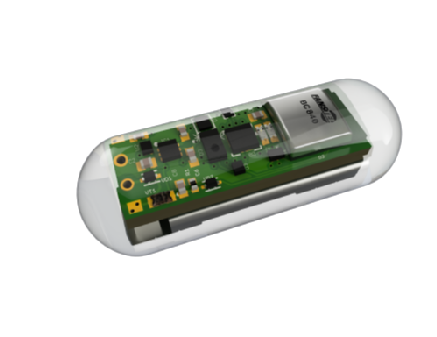
Impact
Using an array of sensors combined with a low-cost wireless transmitter, all in a small chemically resistant package creates a powerful measuring device placed in-situ into the reactor and operating in conjunction with data storage on the cloud. The data processing by machine learning algorithms will facilitate the task of reproducibility of results and reduce the influence of the human factor. The feedback system will simplify this task using software algorithms and robotizing the production process.
Dmitry Isakov, WMG, commented, “The beauty of the Smart Stirrer is that it can be used everywhere, such as a sealed vessels thus minimising the contamination of the reactor. It may give a push to new discoveries as well. It is easy to integrate the stirrer into the labware family and make it “speak” to other lab equipment.”
Samuel Baldwin, from the Mathematics institute at the University of Warwick worked on the smart stirrer during his WMG summer internship, he added: “We have leveraged state-of-the-art technology to build a device with very low power consumption, a broad range of sensor capabilities, and high data-throughput over the Bluetooth Low Energy platform.
The laboratory of the future is that of automation, reproducibility, and safety; our all-in-one Smart Stirrer device eliminates the need for a vast array of individual wired sensors whilst maintaining the control and customisability that one would expect from any piece of advanced laboratory equipment. I look forward to seeing the Smart Stirrer solve laboratory problems and help us understand complex reactions.”
The Smart Stirrer can be an essential element in the future digital laboratory platform – a concept currently developed by the team. Digital laboratory would allow interaction with laboratory equipment (hot plates, switches, pumps) using single-board computers making such equipment “smart” by replacing the manual control with electronic (while using the same manual equipment). Such a platform will provide an unprecedented level of detail and enable monitoring of experimental tasks remotely, thus contributing to the continuation of progress in innovation and research.
The future of this project is to gain further insights into how this product can benefit end-users. The product is currently available for lease and will be available for purchase in the future. The team are keen to learn to more about improving the product for machine learning and to create the most useful device. For more information, email wmgbusiness@warwick.ac.uk.
Nikolay Cherkasov*, Samuel Baldwin, Gregory J. Gibbons, and Dmitry Isakov*
Loqski continues improving skiing device with WMG
Safe and sound
On a ski resort, after spending time on the slopes skiers will often head inside for a break in a restaurant or bar leaving their skis with everyone else’s on a rack outside. For this reason avid skier James Pittard decided not to buy himself expensive skis for fear that they would go missing, whether intentionally or unintentionally.
This led him to think about an easy to use, pocketable device that could lock both skis and poles simply together.
What emerged was the LoqskiLink opens in a new window lock. A highly advanced security combination lock with 10,000 different combinations compared to the average maximum of 2000, the durability to survive temperatures of -50°C and ability to be used with ski gloves on.
Taking his idea to a design agency, the LoqskiLink opens in a new window ski lock was launched in a zinc-based material.
However, as sales were taking off the zinc-based material couldn’t be manufactured quickly enough to keep up with demand and if he wanted to increase volume, he needed to cut manufacturing costs.
“Firstly, the zinc die-cast model is expensive to make because when it comes out of the tool it needs a lot of finishing to make the product look good enough to be able to go to market. And secondly, we needed to strip out a load of parts to improve the assembly because all these were making it difficult to assemble and so pushing the cost of production up,” explains James Pittard, director of Loqski.
Until they discovered GV-5H, a glass fibre reinforced thermoplastic material that is often used in the automotive industry as it’s incredibly tough yet lightweight.
James then approached WMG for help on a number of aspects of looking into Grivory GV-5H, including testing the material, assessing the strength of the redesigned components in the assembly and giving advice on ways in which costs can be reduced during the manufacturing process.

3D printing a solution
Whilst it’s not possible to 3D print in Grivory GV-5H, we printed the prototype parts in strong engineering plastic with a carbon fibre infill using Markforged Mark 2 FDM printer that would reflect the strength of this material. These prints proved the suitability of Grivory GV-5H for this product.
With Loqski having already made a substantial investment in current tooling for its existing zinc-based product, we assessed whether the redesigned barrel design component would fit into the assembly as changing just this one part would help reduce costs. We produced many 3D prints of the barrel component using Markforged Mark 2 FDM printer. These parts were then thoroughly tested not only for form and function but also to assess that it would fit with the other components in this existing assembly.

Streamlining manufacture
Being able to fully test the fitment of the new barrel design enabled Loqski to compare the cost of having to tool a completely redesigned product, which would be an excess of £50,000, or spending £7,000 for tooling just this barrel component and using it in the existing assembly.
“Loqski are now in a position where they are able to streamline manufacture. With less components to assemble, the assembly time has sped up and so manufacturing costs have been reduced. Loqski always had an ambition of keeping manufacture in the UK and by reducing manufacturing costs we are pleased that we could assist them in doing that,” says Neil Jeffree, Innovation Manager at WMG.
By reducing manufacturing costs Loqski is now able to produce a more cost-effective end product in higher volumes, which will put the company in better stead to work with distributors and have the product stocked by retailers worldwide. It has also led James to consider expanding the product’s reach even further.
“One of the things we’d now like to push is getting the new product into the ski rental market, where it can be hired out when skiers rent their skis. This is something we would never have considered with the zinc-based product as it was just too expensive,” says Pittard of Loqski.
For information on working with us, email wmgsme@warwick.ac.uk.


Researchers discover sustainable wastewater treatment technology for hydrogen production
Challenge
Academia and industry have both long been exploring Microbial Electrolysis Cells (MEC), whereby electrogenic microorganisms are used to break down organic pollutants in wastewater, producing clean water and hydrogen gas. Hydrogen itself is a valuable renewable resource, and could be sold to the chemicals and plastics industry, or for use in hydrogen fuels cells for energy storage or electric vehicles.
The technique, while promising, has yet to be deployed at an industrial scale because of the high cost of anode materials, typically graphite or carbon, costing several hundred pounds per square metre, and relatively low rates of hydrogen produced at higher volumes.
Our Sustainable Materials and Manufacturing research team, led by Dr Stuart Coles, has been looking at ways to refine the technique by investigating alternative materials and processing methods.
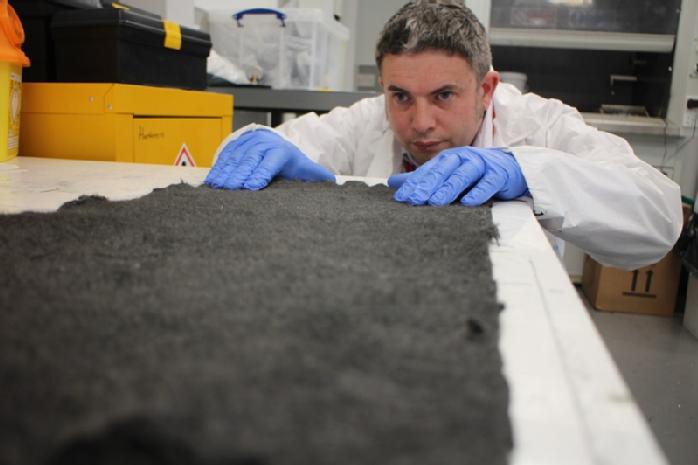
Solution
Dr Coles and his team identified a low-cost alternative anode material in the form of recycled carbon fibre mats, using waste materials from the automotive and aerospace industries. The mats cost just £2 per square metre, a fraction of the cost of graphite materials, and early results indicated that they performed even better.
Our researchers first tested the solution at a small scale in the lab using synthetic wastewater. They then made use of facilities at the Life Sciences department at the University of Warwick to test it on a larger scale with real wastewater. They discovered that the bacteria that developed on the recycled carbon fibre anode, had better temperature tolerance and produced considerably more hydrogen than the graphite anode.
After seeing these positive results, we partnered with Severn Trent Water, setting up a pilot system at Minworth water treatment site for three months. The pilot system processed up to 100 litres of wastewater per day and showed outstanding results right away. It removed up to 51% of organic pollutants and up to 100% of the suspended solids from the water whilst producing 18 times more pure hydrogen than the graphite material.
Impact
Considering the improved performance and lower materials cost, our researchers concluded that their new process cost 93% less than a similar system using graphite materials. These findings make a compelling case for the development of larger pilot systems, something which Severn Trent Water plan to do:
Bob Stear, Chief Engineer at Severn Trent said: “The performance boost and cost savings demonstrated from this research mean that MEC technology is one step closer to being cost competitive with existing wastewater treatment assets. WMG have also demonstrated that this technology has the potential to create a more circular wastewater treatment process which will be essential to delivering on our long term sustainability goals and Net Zero plans. We’re currently scoping scaling up the technology at our test-bed plant in Redditch.
He added ‘We really like working with WMG – they have a great mix of academic know-how and desire to deliver practical solutions that can work in the industrial setting’.
This in turn, could encourage others in the industry to follow suit, opening opportunities for the wastewater treatment industry to become more sustainable, in line with the Government’s net zero agenda.
Dr Coles said, “We are really excited about this technology. By taking waste from the automotive and aerospace sectors, we have developed a circular solution to a longstanding problem. Instead of just treating the wastewater, we are now able to extract value from it in the form of hydrogen at a lower cost than ever before. The next phase of this work is look at optimising the design of the microbial electrolysis cells and further reduce the level of pollutants in the water. This in turn should help produce even more hydrogen!”
For more information about working with WMG, please email wmgbusiness@warwick.ac.uk.
CT analysis for automotive carbon fibre composites
Background
The Automotive Composites Research Centre (ACRC) is a dedicated facility within WMG's Materials Engineering Centre, where the research team develop high-volume composites manufacturing processes for automotive components. Their specialist structural composites group links technology with applied research to address the challenges the automotive industry faces in providing lighter vehicles with lower emissions and reduced environmental impact.
WMG's Centre for Imaging, Metrology and Additive Technologies (CIMAT) provides a hub for innovation and research that, for the first time, brings together state of the art technologies for the enhancement and understanding of product and process performance
Fibre architecture dictates the mechanical properties of fibre reinforced composites. Therefore, determining the fibre architecture is the key to design and manufacture of high-performance automotive composite structures.
Compression moulding of high fibre content, long discontinuous carbon fibre Sheet Moulding Compound (CF-SMC) is an attractive solution for high-rate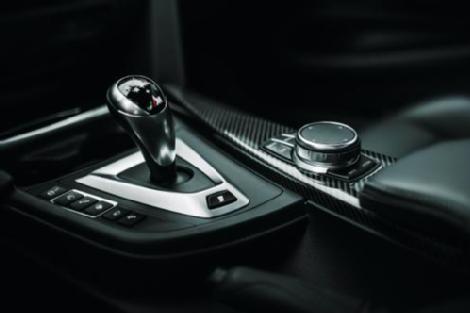 manufacturing of automotive composite structures. SMC flows under compression force to fill the mould cavity, allowing complicated geometry (e.g. ribs and bosses) to be manufactured. One of the main design challenges with SMC is that in-cavity flow during compression moulding increases the level of heterogeneity of the material, particularly in terms of fibre content and fibre orientation.
manufacturing of automotive composite structures. SMC flows under compression force to fill the mould cavity, allowing complicated geometry (e.g. ribs and bosses) to be manufactured. One of the main design challenges with SMC is that in-cavity flow during compression moulding increases the level of heterogeneity of the material, particularly in terms of fibre content and fibre orientation.
Understanding the fibre behaviour during the manufacturing process is the key to improve part quality, and to better predict the structural performance of the part. The level of heterogeneity and complicated fibre architecture in SMC requires 3D analysis of the material’s internal structure. Radiologic techniques such as ultrasound and CT scan can be useful for such purpose. However, due to the low contrast between the densities of carbon fibre and resin, applications of radiologic techniques could only be achieved at the micro-scale for carbon fibre composites.
In order to address the challenges and gaps identified, the Automotive Composites Research Centre (ACRC) teamed up with the Centre for Imaging, Metrology and Additive Manufacturing (CiMAT), seeking novel and robust experimental solutions for characterising fibre architecture, particularly fibre orientation distribution in CF-SMC.
This research was funded by the EPSRC Future Metrology Hub as a feasibility to deliver a step-changing technology in metrology for composites. The ACRC is internationally leading in applied research for high-volume composites manufacturing of automotive structures, and have successfully collaborated with industrial partners on a number of CF-SMC focused projects, notably the APC 6 funded CHAMELEON project and the APC 10 funded TUCANA projects. The CiMAT is equipped with top class CT scanning facilities and high-powered workstations with proprietary software for robust fibre composite material analysis. The collaboration between the two research teams provides an ideal opportunity to achieve this significant advancement in technology.
The study consisted of a series of systematically designed experiments in which the following solutions were delivered:
- New CT scanning methodologies were established to enable clear identification of fibre tows with CF-SMC components
- Commercial fibre analysis package VGStudio was successfully employed to quantify the fibre orientation tensor distributions from the CT scans
- The robustness of the new method was demonstrated through case studies and comparison with other methods such as eddy current and process simulation
This project has successfully enabled robust and reliable fibre architecture characterisation for CF-SMC for the first time, which represents a significant advancement in relation to the current state-of-the-art. High-quality imaging of the internal architecture of the material also allows the researchers from the ACRC to gain better understanding of the processing behaviour of the material, which could not be investigated previously due to the lack of methodology.
A number of journal publications and conference proceedings are currently being prepared to disseminate this work. A webinar titled ‘Understanding fibre architecture: Challenges and novel solutions for carbon fibre SMC’ was produced in June 2021 by Prof Ken Kendall, Dr Connie Qian, Dr Danielle Norman, Dr Nessa Fereshteh Saniee and Dr Jai Gupta to showcase the outputs from this feasibility study. The webinar received over 100 registrations and over 50 external participants joined the live webinar. The webinar also highlighted WMG’s great commitments to EDI and one of the audience commented: “Great example of women in Engineering, well done WMG!”
WMG Accelerator Programme helps Birmingham business bring authentic Oriental and Asian food manufacturing to the UK
Background
Top Oriental is a niche-food manufacturer based in Birmingham that produces Oriental and Asian food products for the UK and European markets. They have a large facility in Coventry containing semi-automated food production lines. Given that the majority of Oriental and Asian food products have historically been imported into the UK with little customisation to UK consumers, Top Oriental saw an opportunity to re-shore manufacturing capability in this area back to the UK and make market-leading products designed with customer requirements in mind.
Challenge
WMG has a longstanding relationship with Top Oriental. Previous to joining WMG Accelerator, WMG Professors in Innovation & Entrepreneurship, Prof. Jay Bal and Prof. Xiao Ma advised the transformation of the business from a ‘manufacturer to wholesale’ model to ‘direct to customer’ model. Top Oriental were keen to improve their production capability and strengthen the commercial side of the business.
Finding out how the WMG Accelerator team could help tackle these challenges, Top Oriental wanted to grow their revenue and permanently move to a ‘direct to customer’ (D2C) business model in order to achieve their objectives.
As part of the preparation for entering the Accelerator, the team diagnosed a number of issues in Top Oriental’s production and commercial operations. In particular, there was reduced visibility across the stock management process and some production processes were avoidably manual. On the commercial side, there was no room for new product development, piloting was limited and there was limited resource to develop new sales channels and market research.
Top Oriental needed resource fast, and the knowledge and best practice to progress. To provide the best solutions, Top Oriental joined the WMG Accelerator Programme to help them overcome their challenges.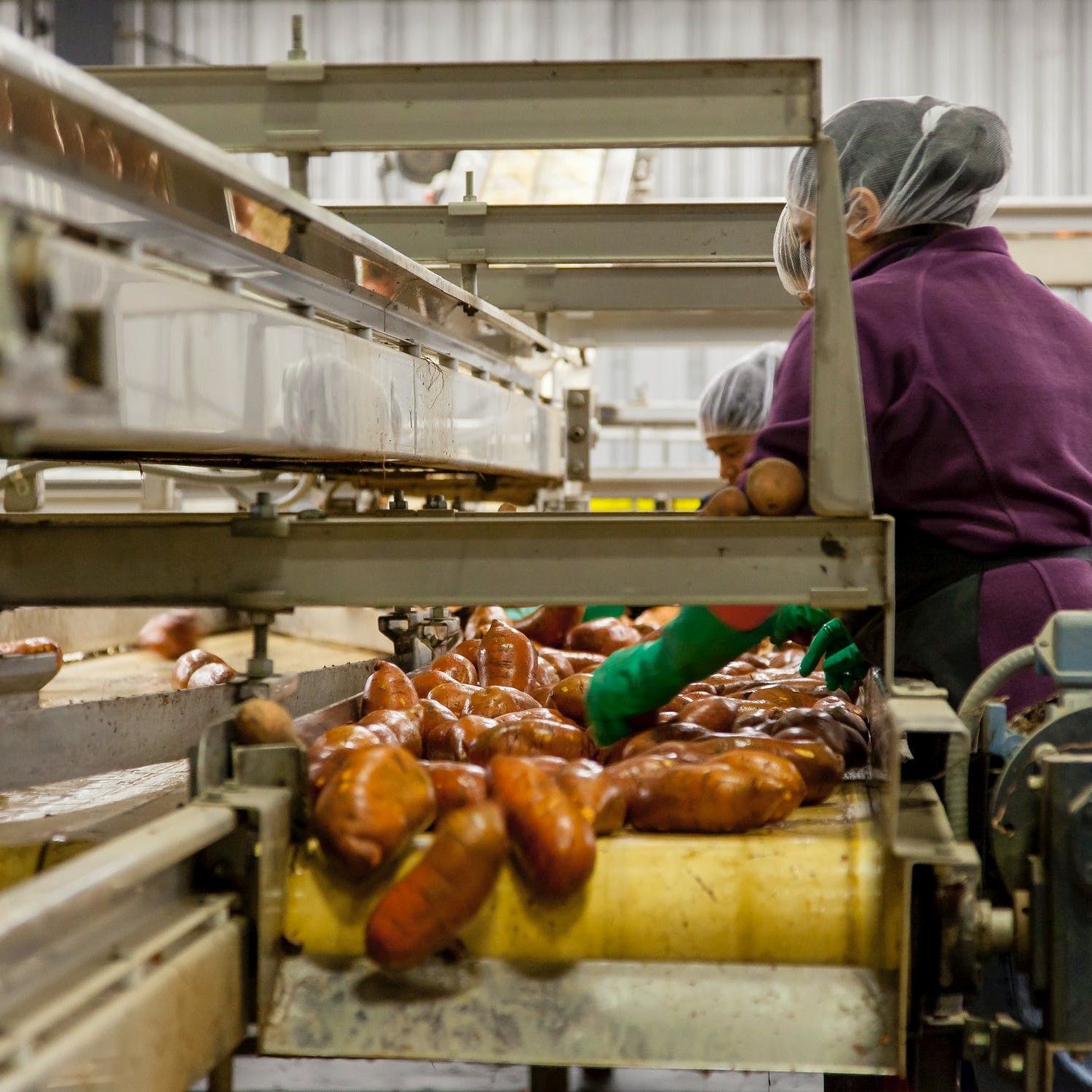
Solution
Working in collaboration with WMG, Top Oriental were able to:
§ Identify gaps in between product development and customer taste profiles using quantitative social listening and qualitative customer research.
§ Gain the skills and knowledge of “lean start-up” methods in order to accelerate their product development cycles, so they could go from gathering market intelligence to real product testing and new product launches in shorter time frame.
§ Created new products based off identified market requirements, most notably a tofu-based snack given the growing demand for alternatives to poultry and red meat in the UK market.
§ Mapped their existing large production facility and created the first production “digital twin” to identify and diagnose bottlenecks and wastage points, in preparation for the rapid responsive reconfiguration of facilities to cater new product development.
§ Assessed a range of lightweight enterprise resource planning (ERP) systems for manufacturing SMEs, and recommended a “best fit” solution to cater a lean start-up model of the rapid responsive reconfiguration of facilities. ERP software systems help organisations manage critical business operations, aligning and creating visibility across all key functions of the operation, including procurement, project management, risk management, compliance and supply-chain.
Impact
As a result of this collaboration, Top Oriental has successfully adopted a “lean start-up” model for its production from market validation to manufacturing and has managed to iterate on its production line and corresponding manufacturing reconfiguration on a quarterly basis. This core enabling ability has led to:
§ Launch of three new product groups, now widely distributed across the UK
§ Increased sales by 30%
§ Re-shoring niche food production back to the UK, given that many of its products were previously imported from the EU.
§ An increased order from the EU, though Brexit still hinders the actual export process. Top Oriental has an estimated £50k per month export value, under the assumption of a smooth export process to EU.
§ Implementation of the ERP system recommended and co-validated with the WMG Accelerator team
§ WMG assisted Top Oriental in securing a new Chief Operating Officer (COO) – who is now executing the newly defined strategy
§ The COO and the WMG Accelerator team are now exploring further project opportunities to ensure Top Oriental continue its innovation in both growing into niche markets, and manufacturing capability advancement.
Ming, CEO at Top Oriental, commented: “It is difficult for businesses to consider disruptive innovations when you’ve been working one way for so long. WMG Accelerator supported us in finding and materialising our new competitive advantages and rapidly responding to a new niche through dynamic reconfiguration of production ability.”
Xiao Ma, Project Lead at WMG, added, “WMG Accelerator team is trying to bring industry transformation to life. We help innovative businesses, such as Top Oriental, to adopt proven methodologies to challenge the current status quo in its industry. It is exciting to see a disruptor has pivoted from “playing” the existing game in its industry, to instead becoming a “game master” by creating new innovations and routes to market for its industry sector.”
For more information about joining the WMG Accelerator Programme, please email us on wmgsme@warwick.ac.uk
Intern duo bolster collaborative relationship with creation of new product line and costing system
Challenge
With manufacturing centres in the UK and in Dubai, Ramfoam makes foam products for a range of applications. Although already selling into a large range of industries including aerospace, construction and retail, the company had significant growth aspirations and wanted to diversify into new markets, specifically the oil and gas sector.
Alongside this, the company had a requirement to optimise their cost model to reduce the time and resource needed to create quotes for more complex (tertiary) products. They believed that a large amount of tertiary work was being taken to competitors because of the issues with their existing quotation system. When quoting for tertiary products, many manufacturing and resource costs need to be factored in due to their complexity.
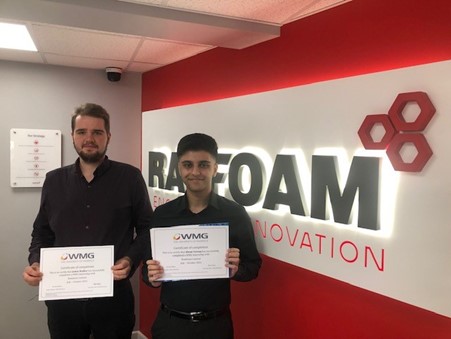
Solution
At the height of the COVID-19 pandemic, Ramfoam had worked with WMG to adapt its manufacturing practices to produce two million face visors a week. They discussed their new ideas with innovation manager Richard Brighton and it was suggested that WMG's internship programme could help them take the projects forward. Ramfoam recruited Ahsan Farooq, an engineering design student at the University of Bristol to work on developing some new products for the oil and gas sector and James Walker, a systems engineering student at the University of Warwick to work on the costing model.
Under guidance from Ramfoam, Ahsan identified three product lines (packer elements, essential products used in gas and oil wells) that could be produced in high volume and had the potential to deliver good margins. He then spent time researching the material requirements, the design features, factoring in how to reduce product failure by simulating conditions, as well as other testing criteria.
James worked to identify areas of improvement to speed up the generation of quotes. He mapped out the current processes and the man hours required to calculate quotes and developed an automated system that could retrieve information quickly and easily. He then went on to integrate it into Ramfoam’s new ERP system along with a quote tracker to monitor how may quotes are coming in and the actual win rate.
Impact
- James’s new system means that 90% of tertiary quotes can now be generated within 24 hours.
- Win rates following quotations have increased from 25% to 50%, and new revenue generated through additional tertiary work is forecast to be £1 million next year
- The introduction of the new product lines will increase turnover by £1-2 million
- As a result of the new product lines, Ramfoam are formulating plans for setting up a specialist group for the oil and gas industry
Tim Mulqueen, Director at Ramfoam commented: “It has been valuable to us to have someone look at some of the priority challenges in our business. James was very diligent and his recommendations will be key in allowing us to win new business. Ahsan’s passion for his job was refreshing to the team. In just 12 weeks he was able to deliver on the project objectives, supporting the growth and market diversification of our company”.
James Walker, WMG Intern added: “The fact that the internship was based on a well-structured project made the difference for me. I could see from the description the benefit that it would have on the company and how much I could learn over the 12 weeks. One of the main benefits for me was the opportunity to improve the way I communicate and collaborate with people in a team, which is a valuable skill in today’s work environment”.
Ahsan Farooq, the second WMG intern, echoes James’ comments: “I was looking for an experience that would allow me to be useful to the company from day 1 and this internship was what I was hoping for. I was able to do independent research and design a new product that worked! An amazing feeling! The experience boosted my confidence, as I feel I am now able to lead on a project and better communicate the value of what I’m doing to clients and stakeholders”.

For more information on working with us, or the WMG Internship Programme, please email wmgsme@warwick.ac.uk
Woodwork company nails success with more than £70k yearly savings with WMG
Background
Gordon Ellis & Co is a UK manufacturer of precision woodworking and rotational moulding. With more than 150 years of experience, the company has moved from horse and hand tools to today’s CNC precision woodworking machinery. Products include hospital bed frames, commodes, trolleys, high end audio equipment casings, and automotive wooden internal components. Their rota moulding products have a wide range of durable and weather resistant applications.
Challenge
Gordon Ellis & Co has been making quality wooden and rotational moulded products for many years. Although they’ve progressed massively from manual manufacturing practices to industrial machinery, they are now interested in stepping into the digital age.
Having met the WMG SME Group at a networking event, they were interested in getting their perspective for moving forward and building better. This would mean investigating a way of analysing the factory to discover how ‘digital manufacturing’ can create improvements. They hoped this would help them to make more products faster to meet their increasing customer demand.
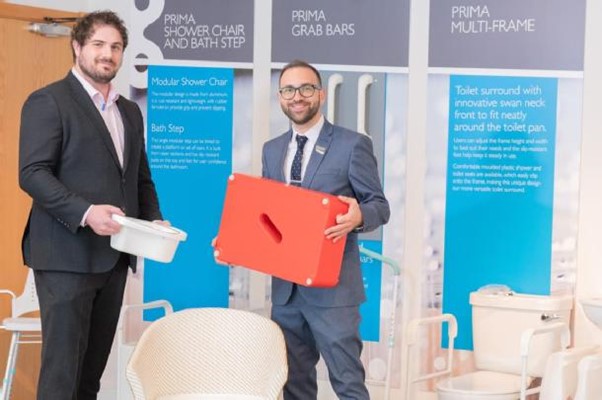
Solution
Digital manufacturing is often a thrown around buzz-phrase, but at WMG we aim to promote and explain just how much digital manufacturing can improve efficiency, productivity, and data collection. First things first, we wanted to make sure Gordon Ellis’s factory was prepared for the transition.
Rich Savidge, Technology Transfer Engineer at WMG, and Onur Eren, Innovation Manager, undertook a detailed investigation of the key facilities ‘current-state’, reviewing existing equipment, productivity, efficiency, and data outputs. Working with Gordon Ellis & Co, the team were able to propose a ‘future-state’, recognising equipment suitable for upgrade, targeting challenge areas and developing the businesses core capabilities.
The core impacts of the project saw reduced costs by eliminating material waste and promoting operational excellence methodologies. The team also recognised ways to introduce useful methods to gather data from their factory.
During this preliminary optimisation project, it was clear that digitisation would have a major improvement to Gordon Ellis & Co’s turnover while increasing their capability to stay competitive and enter luxury markets. The team worked hard to submit a Knowledge Transfer Partnership (KTP) bid that will gain them the funding they’d need to complete a two-year project to source an associate engineer to implement sensors and data collection devices around the factory. The beauty of a KTP is that it works in partnership with the externally employed graduate (the associate), and WMG utilising the facilities, expertise, and resources to see the project through to the end.
Impact
- The preliminary project ‘quick-wins’ saved the company £70k a year through waste elimination and the streamlining of internal procedures.
- More substantial gains will be had after the installation of state-of-the-art CNC equipment yielding an estimated gain in production capacity of x 4, de-risked by the team’s involvement.
- The Innovate UK KTP bid funding was successful and the project aims to increase the turnover of Gordon Ellis & Co by £540k over the next five years.
- Their savings will allow them to invest in the newly defined strategy, targeting industry 4.0 technologies that will enable sustainable growth
Rich Savidge, Technology Transfer Engineer, WMG, commented; “Working together, we were able to objectively define bottlenecks and target real production waste, preparing a journey for Gordon Ellis and their digitalisation journey. I am very pleased that they have won their KTP bid, and I can’t wait to see what they achieve in the next five years.”
Onur Eren, Innovation Manager, WMG, said: “I really enjoy projects like these because the team at Gordon Ellis were so open to our suggestions and were passionate about taking on the latest innovations before others in industry. I’m looking forward to supporting the digitalisation KTP over the next two years and beyond.”
Daniel Robinson, Financial Controller & Company Secretary, Gordon Ellis, added; “We’ve spent over 150 years in the industry, and we know it well, however, we are also looking to the future and seeing that we need to become more digital to continue to be innovative and competitive. WMG know digital and smart factories so well and we got support for the KTP that I wouldn’t have got anywhere else.”
